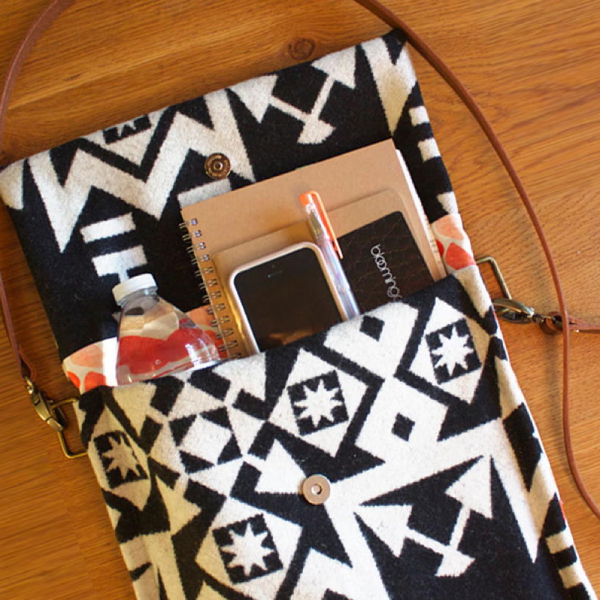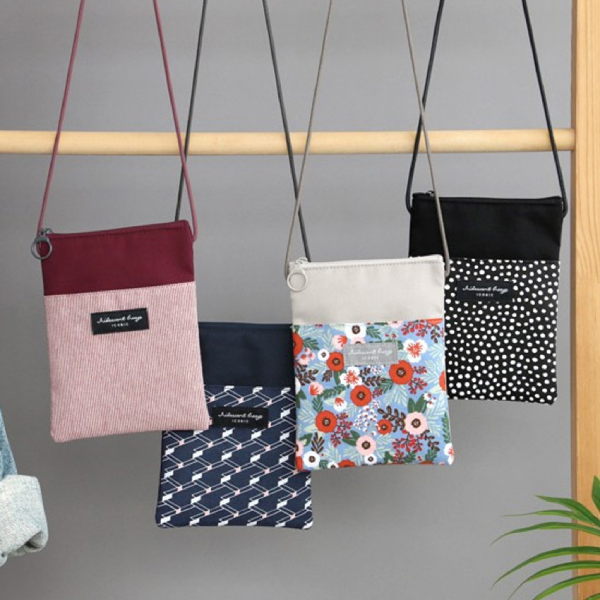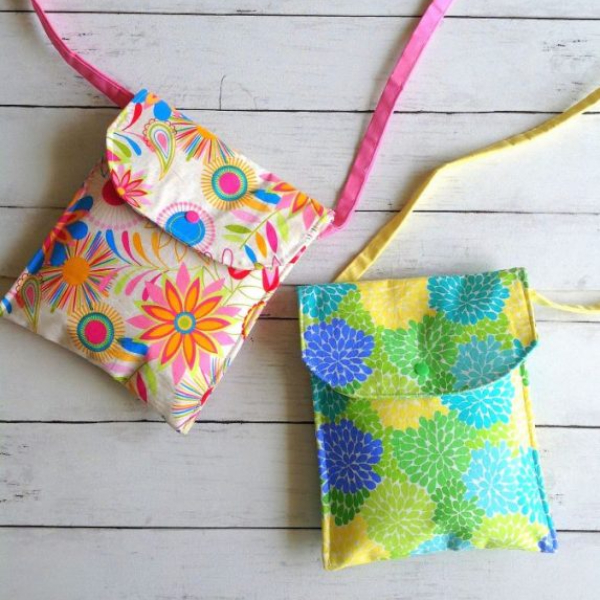Introduction to DIY Crossbody Bags
Creating a DIY crossbody bag provides both a fashion statement and a sense of accomplishment. Crossbody bags are popular for their convenience and versatility, serving as a hands-free option perfect for the bustling individual. With a variety of patterns and design choices available, the personalization possibilities are endless.

From picking the fabric to mastering the sewing of zippers and straps, the journey of making your own crossbody bag can be immensely rewarding. Not only do you end up with a unique accessory tailored to your style, but you also gain invaluable sewing skills along the way.
Moreover, crafting your own bag allows for customization in size, pockets, and hardware. Whether you aim for a minimalist look or an elaborately patterned design, a DIY crossbody bag can reflect your personal flair. Let’s embark on this creative venture, ensuring a blend of utility and style! Creating a unique Burberry bag crossbody will showcase your style while offering practicality, making it a must-have accessory for any fashion enthusiast.
Selecting the Right Materials for Your Crossbody Bag
Choosing the right materials is key to a successful DIY crossbody bag. Here are some essentials to consider:
- Exterior Fabric: Opt for durability and style. Heavyweight cotton, upholstery fabric, or even repurposed materials like denim work well. Spoonflower’s Dogwood Denim is a popular choice for its sturdiness.
- Lining Fabric: A lightweight cotton is best for the inside. It makes the bag look neat and helps pockets stay functional.
- Interfacing: This reinforces fabric and gives your bag structure. Choose heavyweight interfacing for the exterior and a lighter one for the lining.
- Zippers and Hardware: Metal zippers and D-rings add a professional touch. Ensure they match the bag’s size and style.
- Strap Material: The strap needs to be comfortable and robust. Consider using the same material as your exterior or a strong webbed fabric.
- Closure Options: Depending on your design, you may need a tongue lock, magnetic snap, or simple button closure.
- Thread: Use a color that complements your fabric and ensure it’s strong enough for sewing through multiple layers.
Once you’ve gathered your materials, you’re ready to move on to the next step of cutting and prepping your fabrics.
Cutting and Prepping Your Fabrics
Preparing your fabrics is a crucial step in crafting a DIY crossbody bag. First, wash and iron all fabrics to remove any shrinkage or creases. Then, lay out the exterior, lining, and interfacing materials. Using a reliable pattern or your own measurements, carefully trace the necessary pieces for your bag’s body, strap, pockets, and any additional components. As you prepare your fabrics, consider the upcoming crossbody bag trends for 2024 to inspire your design and ensure a stylish final product.
Remember to add seam allowances around each piece before cutting. Seam allowances are typically about 3/8″ to 1/2″. For accuracy, use a rotary cutter and a cutting mat. This will ensure straight, clean cuts.
Once all pieces are cut, apply the interfacing to the wrong side of the corresponding exterior fabric pieces. Follow the manufacturer’s instructions for iron-on interfacing to ensure it adheres properly. Do the same for any interior pieces that need extra support.
It’s also a good idea to label each cut piece with a piece of tape and a marker. This helps keep track of what each piece is for as you move on to assembly. Next up, you’ll tackle sewing essentials, like installing zippers and setting in D-rings, to bring your crossbody bag to life.
The Essential Components: Zippers, D-Rings, and Interfacing
For sturdy crossbody bags, include essential components like zippers, D-rings, and interfacing. Zippers keep contents secure, while D-rings attach straps firmly. Interfacing provides added structure.
Zippers
Choose zippers that complement your bag’s design. Measure the bag’s opening to determine zipper size. Metal zippers add a professional look but ensure it operates smoothly.
D-Rings
Select D-rings that match the width of your strap. These small metal rings anchor straps to the bag. They must be strong to withstand pulling and weight.

Interfacing
Use heavyweight interfacing for the outer fabric and lighter interfacing for the lining. Cut interfacing to match your fabric pieces, iron them on for stability. This ensures your bag maintains its shape.
Step-by-Step Guide to Sewing the Bag Body
Embarking on your sewing journey starts with creating the bag body. Follow these detailed steps to ensure a solid foundation for your DIY crossbody bag.
- Lay out Fabrics: Position your exterior and lining pieces right sides together.
- Sew Sides: Stitch the sides and bottom of the bag pieces, leaving the top open.
- Box the Corners: For a flat base, fold the corners and measure a straight line perpendicular to the seam. Sew along this line.
- Attach the Zipper: Align the zipper with the bag’s top edge. With the lining peeled back, sew the zipper to the exterior fabric, then topstitch the lining in place.
- Reinforce with Interfacing: If you haven’t already, affix interfacing to the wrong side of the exterior pieces for added structure.
- Prepare the Lining: Sew the lining’s sides and bottom, mirroring the exterior’s process. Leave a gap in the bottom seam for turning the bag right side out later.
- Combine Exterior and Lining: Place the exterior bag (right side out) into the lining (wrong side out), ensuring they’re properly aligned. Sew around the top edge.
- Pull Through the Opening: Turn your bag right side out through the gap left in the lining.
- Seal the Lining: Hand-stitch or machine-sew the opening in the lining closed.
- Topstitch the Bag: For a polished look, topstitch around the bag’s top edge where the exterior and lining meet.
Take your time with each step, paying attention to detail for a beautifully crafted crossbody bag. Next up, we’ll focus on creating a strap that’s both comfortable and durable.
Crafting the Perfect Strap for Comfort and Durability
Crafting a strap for your DIY crossbody bag requires attention to comfort and durability. The strap must be able to withstand daily use and still feel comfortable on your shoulder. Here are the steps to ensure a strong and comfy strap:
- Choose the Right Material: For the strap, select a material that is both sturdy and comfortable. Thick fabrics like denim or canvas, like Spoonflower’s Dogwood Denim, are ideal.
- Cutting Your Strap: Measure and cut your strap material. A typical width is about 1.5 to 2 inches, with a length that suits your height and preferred bag drop.
- Attaching Interfacing: Add interfacing to the strap if needed for extra strength. This step is optional if using heavy-duty materials.
- Folding for Comfort: Fold the strap fabric in half lengthwise, right sides together, and sew along the edge. Then, turn the strap right side out for a neat finish.
- Reinforce the Strap: Topstitch along the edges of the strap. This gives it a professional look and increases durability.
- Hardware Attachment: Attach the D-rings to the ends of the strap with small fabric loops. Ensure that the D-rings are the same width as the strap.
- Adjustability Feature: Add an adjustable slider if desired. This allows for lengthening or shortening the strap as needed.
- Secure Attachment: Sew the strap firmly onto the bag or use swivel hooks for a detachable option.
By following these steps, you’ll have a strap that offers comfort during long periods of wear and the resilience to carry your essentials securely. In the next section, we’ll focus on integrating organizational pockets and compartments. Creating a custom crossbody bag with thoughtful design ensures both comfort and functionality, making it perfect for daily use and organizing your essentials effectively.
Adding Pockets and Compartments for Organization
Organizing your belongings in a crossbody bag is crucial. Here’s how to add pockets and compartments effectively:
Choose Pocket Placement
Decide where you want your pockets. Common spots are inside, on the back, or on the front flap.
Cut Pocket Pieces

Using your bag’s dimensions, cut out pieces for each pocket. Add seam allowances to these pieces too.
Sew Pockets to Lining
Before assembling the bag, sew pockets onto the lining. Make sure they’re straight and secure.
Add Zippered Compartments
For added security, create zippered pockets. Measure and cut fabric to fit and sew zippers in place.
Attach Inside Dividers
To organize small items, sew dividers inside your bag. Use sturdy fabric to keep them upright.
Make Use of Interfacing
Interfacing will give extra support to your pockets. Use it especially if you’re working with lighter fabrics.
By adding these pockets and compartments, you’ll keep your items organized and easily accessible while on the move.
Final Touches: Topstitching and Closure Options
With your bag nearly complete, it’s time to add the final touches that will elevate its look and function.
Topstitch for a Polished Look
Topstitching ensures edges are neat and reinforces seam durability:
- Select a matching thread that blends well with your fabric.
- Sew evenly around the bag’s top edge and along the strap.
- Use a longer stitch length to avoid bunching and to create a professional finish.
Aim for consistency in your stitching to maintain a clean, tailored appearance.
Choosing the Right Closure
Your closure choice is vital for security and ease of use:
- Magnetic snaps are easy to install and provide quick access.
- Zippers offer the best security for the main compartment.
- Buttons add a decorative touch and work well for less-used pockets.
Match the closure style to your bag’s design and your personal preference.
Handling Different Fabric Types
When working with thick or layered fabrics, such as Spoonflower’s Dogwood Denim, remember to:
- Use a denim needle for your sewing machine.
- Go slow when sewing over bulky seams to avoid needle breakage.
Ensure Lasting Quality
Finally, give your bag a thorough inspection. Trim any loose threads and make sure all components are secure. With these finishing touches, your DIY crossbody bag is ready to be shown off and enjoyed!
Troubleshooting Common Sewing Challenges
When sewing a DIY crossbody bag, you may encounter challenges. Here are common ones and how to fix them:
Trouble with Tension
If stitches are loose or puckering, your tension may be off. Check your sewing machine’s manual to adjust the tension for your fabric type.
Skipped Stitches
A dull or wrong-sized needle can cause skipped stitches. Replace it with a new, correct one for your fabric. For heavy fabrics like Dogwood Denim, use a denim needle.
Fabric Not Feeding
Ensure your feed dogs are up and clean. A walking foot can help evenly feed layered or heavy fabrics like denim.
Thread Breaking
This can happen if you’re using poor quality thread or the wrong size. Use high-quality thread and ensure it’s appropriate for your sewing machine and fabric.
Difficult Zippers
When sewing zippers, use a zipper foot and go slow over bumps. If your fabric is thick, hand-cranking can help prevent needle breakage or misalignment.
Handles That Twist
Ensure straps are flat before attaching. If they twist, unpick, flatten, and re-sew.
Interfacing Issues
If the interfacing isn’t sticking, check if you’re using the correct heat setting. Press firmly and consistently according to the instructions.
By addressing these challenges, your sewing process will be smoother. Remember, patience and practice make perfect when it comes to DIY projects.
Maintenance and Care for Your Handmade Crossbody Bag
Taking care of your handmade crossbody bag is crucial for its longevity. Here are some tips to keep your DIY creation in excellent shape:
- Regular Cleaning: Gently clean your bag with a damp cloth. For stubborn stains, use a mild soap solution but avoid harsh chemicals.
- Storage: Store your bag in a cool, dry place. If not in use, stuff it with tissue paper to maintain its shape.
- Avoid Overloading: Don’t overload your bag. Too much weight can strain the seams and strap.
- Protect from Water: Keep your bag away from rain and spills. Water can damage the fabric and cause colors to run.
- Zipper Care: Lubricate the zipper with candle wax for a smooth slide. Take care not to force zippers open or closed.
- Strap Integrity: Check the strap and attachments regularly. Reinforce any loose threads or weak areas promptly.
- Refreshing the Fabric: To brighten the fabric, use a fabric brush. This will remove dust and keep the colors vibrant.
- Rotate Bags: Use different bags to prevent wear and tear. This rotation gives your crossbody bag a chance to rest.
- Professional Repair: If you face a difficult repair, consider a professional. They have the right tools for complex issues.
By following these simple maintenance steps, your DIY crossbody bag will remain durable and stylish for years to come.

